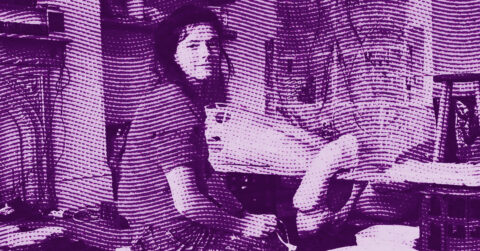Listen to me carefully, you bunch of snobs: Sun Yitian paints the soul of our time with a precision that should make us all tremble. This Chinese artist, armed with her brushes and relentless lucidity, transforms the plastic waste of our consumerist civilization into prophetic oracles of troubling beauty. Her hyperrealistic paintings of cheap inflatable objects and decapitated Ken doll heads are not mere exercises in technical virtuosity but meticulous autopsies of our deepest desires and most profound alienations.
Born in 1991 in Wenzhou, this factory city in Zhejiang where plastic trinkets that invade our lives have been manufactured for decades, Sun Yitian grew up in the very heart of the global capitalist machine. Wenzhou, this laboratory of counterfeiting and mass production, offered her the daily spectacle of modern alchemy: the transformation of petroleum into ephemeral objects of desire. It is in this industrial landscape, between counterfeit shoe factories and plastic toy workshops, that her artistic vision of surgical acuity was forged.
Her acrylic paintings, with striking photographic realism, capture with manic precision the smooth and shiny surfaces of inflatable elephants, pink dinosaurs with blue wings, penguins smiling blissfully in their synthetic perfection. Every artificial light reflection, every fold in the plastic, every imperfect seam betraying industrial production is rendered with an obsession-worthy meticulousness. This impeccable technique is not gratuitous: it reveals the very essence of our relationship to objects in a society where appearance trumps substance, where visual seduction masks spiritual emptiness.
Sun Yitian’s work fits into a pictorial tradition that dates back to the Dutch masters of the 17th century, those “Little Masters” who immortalized objects of bourgeois daily life with almost religious devotion. Like them, she transforms still life into a philosophical meditation on the human condition. But where Johannes Vermeer painted pearls and precious fabrics to celebrate emerging commercial opulence, Sun Yitian paints plastic toys to denounce the grotesque apotheosis of this same capitalist logic. Her inflatable toys become contemporary vanities, colorful memento mori that remind us of the fragility of our materialistic illusions. The artist thus establishes a striking dialogue between the golden age of Dutch painting and our post-industrial era, revealing the historical continuity of commercial fetishism [1]. This lineage is no coincidence: it highlights how Western art has always been the complicit and critical mirror of its time’s economic transformations. Jan Davidsz de Heem’s tulips already foreshadowed our inflatable elephants, in the same ambiguous celebration of artifice and commercial beauty. Sun Yitian perpetuates this tradition while subverting it, replacing symbols of wealth with those of our consumerist alienation. Her canvases function as inverted still lifes, where material abundance reveals its own spiritual emptiness. This approach turns each painted toy into an allegory of our era, each plastic surface into a metaphor for our manufactured desires.
But it is in her series dedicated to Ken, Barbie’s eternal fiancé, that Sun Yitian perhaps reaches her greatest subversive power. These decapitated male heads, isolated from their perfect bodies, float in indeterminate spaces like fallen icons of masculinity in crisis. The artist here operates a radical inversion of the gaze: after centuries in which women were reduced to objects of male contemplation, she reverses this logic by turning the man into a pure decorative surface, a fetishized object deprived of autonomy. Ken becomes the perfect embodiment of what film theorists call the “female gaze,” this perspective that objectifies and fragments the male body to reduce it to its aesthetic components.
This artistic strategy is in line with the reflections developed by film theorist Laura Mulvey in her foundational essay “Visual Pleasure and Narrative Cinema” from 1975, where she analyzed the mechanisms of the male gaze in Hollywood cinema [2]. Sun Yitian applies these concepts to contemporary painting, creating what one could call a “pictorial female gaze” that overturns the codes of gendered representation. Her decapitated Kens are no longer desiring subjects but desired objects, frozen in their plastic perfection and expressive muteness. This inversion of the gaze radically transforms our perception of visual power relations, revealing the constructibility of gendered identities and the symbolic violence inherent in any objectification process. The artist does not just criticize patriarchy: she dismantles its visual mechanisms to better turn them against themselves. Each Ken head thus becomes a silent manifesto against the hegemony of the male gaze, a claim of women’s right to look and desire on their own terms. This approach also reveals the fundamental absurdity of gender stereotypes, showing how our sexual identities are shaped by the toy industry and commercial imperatives rather than by any natural essence whatsoever.
Sun Yitian is currently pursuing a doctoral thesis in literature at Tsinghua University in Beijing, dedicated to the representation of objects in the history of Western art. This academic research directly nourishes her artistic practice, allowing her to anchor her approach in a deep theoretical reflection on the status of the object in our contemporary societies. Her work as a painter constantly dialogues with her intellectual training, creating a piece of remarkable conceptual density that goes far beyond a simple stylistic exercise.
The artist’s recent collaboration with Louis Vuitton for the 2024 “Voyager” collection perfectly illustrates the paradoxes of her approach. Her inflatable animals, initially painted as symbols of consumerist alienation, were reproduced on luxury bags sold for tens of thousands of euros. This metamorphosis reveals the transformative power of contemporary art, capable of turning symbols of poverty into objects of social prestige. But it also highlights the inherent contradictions in any critical artistic practice within a market system: how to denounce capitalism while participating in its most sophisticated mechanisms?
This productive tension runs through all of Sun Yitian’s work, giving it a complexity that escapes simplistic readings. Her paintings are neither naive celebrations of pop culture nor moralistic condemnations of consumerism, but nuanced explorations of the ambiguities of our contemporary condition. They reveal how we are all caught in the nets of a system that transforms our most intimate desires into marketable products, while paradoxically offering us the aesthetic means to become aware of this alienation.
Under her brush, the exhibition space becomes a theater of contemporary illusion, where each canvas operates as a set revealing the hidden mechanisms of our relationship with objects. The dramatic lighting she favors in her installations enhances this spectacular dimension, transforming the gallery into a stage where the silent drama of our manufactured desires unfolds. This scenographic approach reveals her deep understanding of the challenges of artistic reception in the age of social networks and the attention economy.
Sun Yitian fully belongs to the generation of Chinese artists who grew up during the triumphant globalization of the 1990s and 2000s, privileged witnesses of their country’s transformation into the “factory of the world.” Her perspective on industrial objects carries the memory of this extraordinary historical change, when millions of Chinese shifted within a few decades from an agricultural economy to a hypermodern consumer society. Her inflatable toys condense this collective trajectory, embodying both the promise of emancipation brought by material prosperity and the disillusionment faced with its alienating effects.
This generational dimension partly explains the artist’s meteoric success on the international contemporary art market. Her works speak a universally understandable visual language, the language of standardized industrial objects now circulating worldwide. An inflatable penguin made in Wenzhou evokes the same childhood memories in Shanghai as in Berlin or Los Angeles, creating a community of experience beyond national and cultural borders.
But Sun Yitian does not content herself with playing on this shared nostalgia: she reveals the political and economic underpinnings of it. Her recent paintings increasingly incorporate subverted religious elements, showing how the symbols of Christianity have been absorbed and transformed by the Chinese counterfeit industry. Her Asian-featured Virgin Mary and her Christ figures with faces swollen by cosmetic surgery testify to this global circulation of sacred images, which have become commodities like any other in the globalized economy.
This approach reveals an artist perfectly aware of the geopolitical stakes of her practice. By showing how China has become the laboratory of our Western fantasies, she subtly reverses the symbolic power dynamics. It is no longer the Westerners who impose their aesthetic models on the rest of the world, but the Chinese factories that shape our imaginations by producing the objects of our desires. Wenzhou thus becomes the true contemporary artistic center, a place where the new visual mythologies of humanity are forged.
Sun Yitian’s work thus confronts us with a fundamental question: what remains of authenticity in a world where everything can be reproduced, copied, subverted? Her hyperrealistic paintings of artificial objects create a salutary ontological vertigo, forcing us to question our certainties about true and false, original and copy, art and commodity. From this perspective, her collaborations with the luxury industry do not betray her critical approach but fulfill it, revealing how contemporary art fully participates in the spectacular economy that it sometimes claims to denounce.
This unsparing lucidity makes Sun Yitian one of the most relevant voices of her generation. Neither cynical nor naive, she observes our era with the ironic distance and melancholic tenderness of one who knows that we are all aboard the same ship. Her inflatable toys then become aesthetic lifebuoys, allowing us to keep our heads above water in the ocean of goods that overwhelms us.
Sun Yitian’s art functions as a ruthless and alluring mirror of our contemporary contradictions. It shows us what we have become without sparing us, but without condemning us either. In her skillful hands, painting regains its primordial critical function: helping us see clearly through the chaos of the present, to distinguish the essential from the accessory, the authentic from the fake. And if her inflatable penguins smile at us with such kindness, it may be to remind us that it is still possible to laugh at our own alienations, the first step towards a hypothetical liberation.
- Walter Liedtke, “Dutch Paintings in The Metropolitan Museum of Art”, Yale University Press, 2007
- Laura Mulvey, “Visual Pleasure and Narrative Cinema”, Screen, vol. 16, no. 3, 1975
















